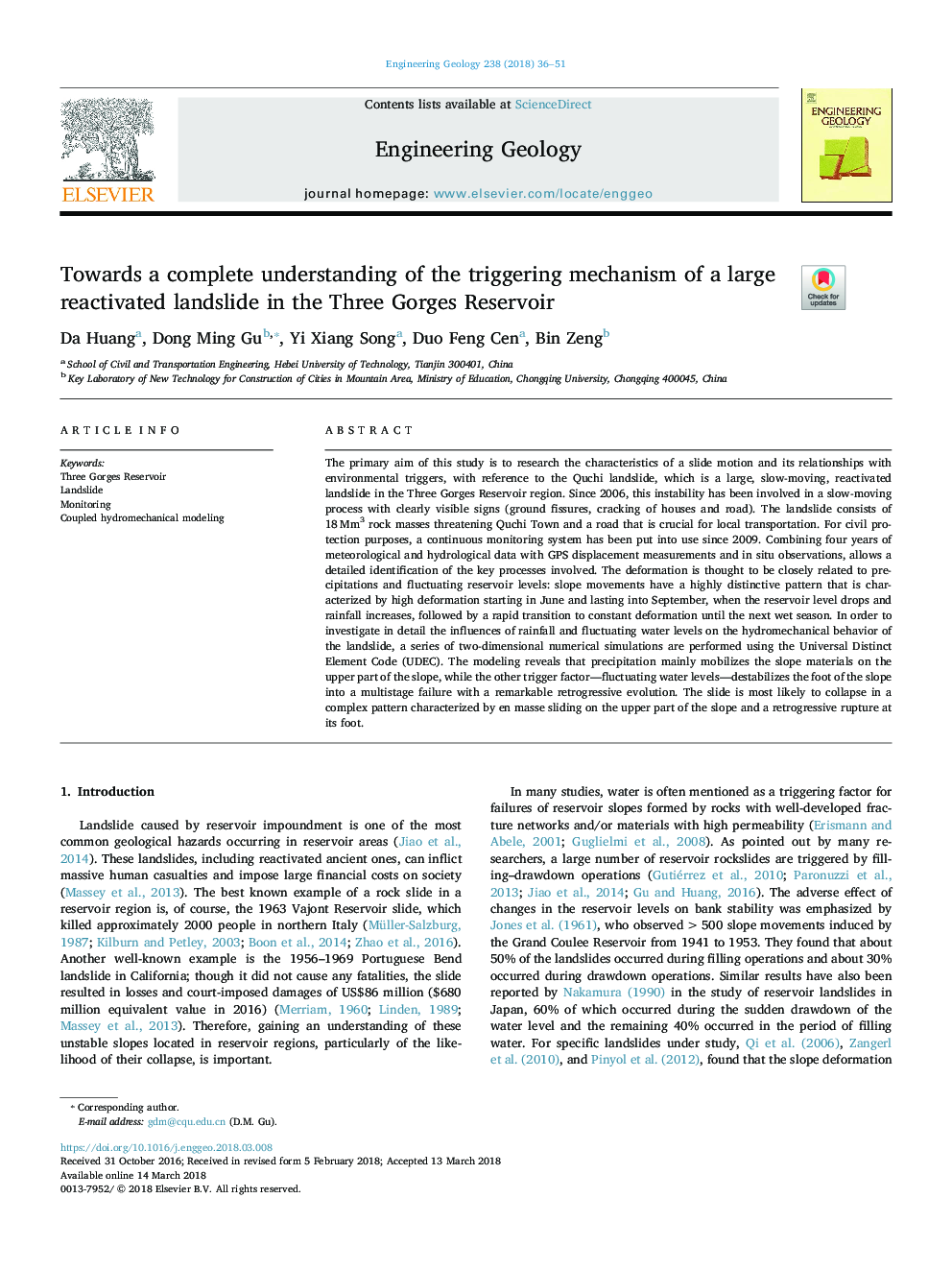| کد مقاله | کد نشریه | سال انتشار | مقاله انگلیسی | نسخه تمام متن |
|---|---|---|---|---|
| 8915903 | 1641747 | 2018 | 16 صفحه PDF | دانلود رایگان |
عنوان انگلیسی مقاله ISI
Towards a complete understanding of the triggering mechanism of a large reactivated landslide in the Three Gorges Reservoir
ترجمه فارسی عنوان
به سمت درک کامل از مکانیزم راه اندازی یک لغزش بزرگ فعال شده در مخزن سه گره
دانلود مقاله + سفارش ترجمه
دانلود مقاله ISI انگلیسی
رایگان برای ایرانیان
کلمات کلیدی
سه غبار مخزن، رانش زمین، نظارت بر، مدل سازی هیدرومکانیکی همراه با هم،
موضوعات مرتبط
مهندسی و علوم پایه
علوم زمین و سیارات
مهندسی ژئوتکنیک و زمین شناسی مهندسی
چکیده انگلیسی
The primary aim of this study is to research the characteristics of a slide motion and its relationships with environmental triggers, with reference to the Quchi landslide, which is a large, slow-moving, reactivated landslide in the Three Gorges Reservoir region. Since 2006, this instability has been involved in a slow-moving process with clearly visible signs (ground fissures, cracking of houses and road). The landslide consists of 18â¯Mm3 rock masses threatening Quchi Town and a road that is crucial for local transportation. For civil protection purposes, a continuous monitoring system has been put into use since 2009. Combining four years of meteorological and hydrological data with GPS displacement measurements and in situ observations, allows a detailed identification of the key processes involved. The deformation is thought to be closely related to precipitations and fluctuating reservoir levels: slope movements have a highly distinctive pattern that is characterized by high deformation starting in June and lasting into September, when the reservoir level drops and rainfall increases, followed by a rapid transition to constant deformation until the next wet season. In order to investigate in detail the influences of rainfall and fluctuating water levels on the hydromechanical behavior of the landslide, a series of two-dimensional numerical simulations are performed using the Universal Distinct Element Code (UDEC). The modeling reveals that precipitation mainly mobilizes the slope materials on the upper part of the slope, while the other trigger factor-fluctuating water levels-destabilizes the foot of the slope into a multistage failure with a remarkable retrogressive evolution. The slide is most likely to collapse in a complex pattern characterized by en masse sliding on the upper part of the slope and a retrogressive rupture at its foot.
ناشر
Database: Elsevier - ScienceDirect (ساینس دایرکت)
Journal: Engineering Geology - Volume 238, 2 May 2018, Pages 36-51
Journal: Engineering Geology - Volume 238, 2 May 2018, Pages 36-51
نویسندگان
Da Huang, Dong Ming Gu, Yi Xiang Song, Duo Feng Cen, Bin Zeng,
